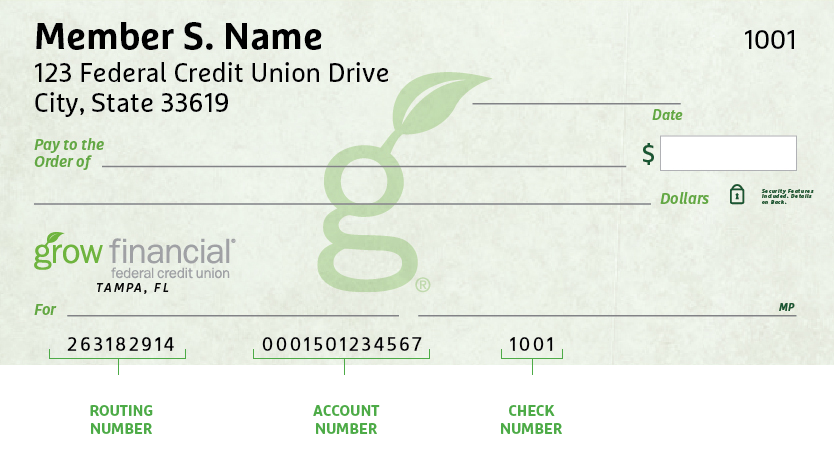- Personal
- Membership
- Membership
- Rates & Fees
- Checking
- Checking
- Personal Loans
- Personal Loans
- Wealth Management
- Investment Services
- Financial Advisors
- Resource Center
- Business

February 11, 2021
What’s New for Tax Year 2020: Highlights of Important Changes
In typical 2020 fashion, the tax changes for the year are numerous and, at times, complex. We’ve compiled several of the key highlights that you’ll need to know, though the list is not comprehensive. As always, we advise talking with a qualified tax professional about your specific situation. Now let’s talk about these changes for tax year 2020.
1. Recovery Rebate Credit
According to the IRS, if you didn’t get the full Economic Impact Payment, you may be eligible to claim the Recovery Rebate Credit on your tax return. If you didn’t get any payments at all, or got less than the full amounts, you may still qualify for the credit, even if you don’t normally file taxes. Visit Recovery Rebate Credit for more information.
2. Provisions added for the Earned Income Tax Credit (EITC)
Designed to help low to middle income earners, the Earned Income Tax Credit maximum has risen to $6,660 for qualifying taxpayers who have three or more qualifying children, up a bit from $6,557 the previous tax year. Find out if you qualify. Plus, if your earned income was higher in 2019 than in 2020, you can use the 2019 amount to figure your EITC for 2020. This temporary relief has been provided through the Taxpayer Certainty and Disaster Tax Relief Act of 2020. Learn more.
3. New marginal rates
For tax year 2020, the top tax rate stays at 37% for single taxpayers with incomes more than $518,400, or $622,050 for married couples filing jointly. The other rates are:
- 35% for incomes over $207,350 | $414,700 for married couples filing jointly
- 32% for incomes over $163,300 | $326,600 for married couples filing jointly
- 24% for incomes over $85,525 | $171,050 for married couples filing jointly
- 22% for incomes over $40,125 | $80,250 for married couples filing jointly
- 12% for incomes over $9,875 | $19,750 for married couples filing jointly
- 10% for incomes $9,875 or less | $19,750 or less for married couples filing jointly
4. Higher standard deduction
Good news for anyone who takes the standard deduction. It’s up $400 from 2019 for married filing jointly, raising to $24,800 for tax year 2020. For single taxpayers and married individuals filing separately, the standard deduction is $12,400, up $200, and for heads of households, the standard deduction is $18,650, up $300.
Learn more about two ways to reduce your taxable income.
For additional details about the 2020 tax year, visit irs.gov or consult a qualified tax professional.
Posted In:
How to Find Your Routing & Account Numbers
When you make a payment online, by phone or on a mobile device, you may be asked for our routing number and your checking account number. Credit unions and banks use these numbers to identify accounts and make sure money gets where it’s supposed to be. You’ll also need to provide your routing and checking account numbers for:
- Direct deposits
- Electronic checks
- Military allotments
- Wire transfers
Where to Find Your Routing & Checking Account Numbers
Your personal checks include both our routing number and your account number, as shown on the Grow check example below.

Don’t have a Grow check? No worries.
Visit any Grow store and ask for a Direct Deposit Form. It lists both your routing number and checking account number.
Making a Loan Payment
When it comes to making payments, we try to make it as painless as possible to pay your loan every month. We have several different ways to pay, including convenient online options.
Pay Online
You have two ways to pay online by transferring funds from another bank or credit union.
- Grow Online Banking (Preferred payment method for any loan)
This is the simplest way to pay your loan. You can make one-time payments or set up automatic recurring payments in Grow Online Banking. Once you log in, select “Transfer/Payments” from the menu. If you’re not enrolled in Grow Online Banking yet, you can set up your account in just a few minutes.
Log In
- Debit Card or ACH (Available for auto, personal loans and HELOCs)
Note: ACH and debit card payments are not available for credit cards or most mortgages, except HELOCs.
We accept ACH payments with no additional fees or Mastercard® and Visa® debit cards with a convenience fee of $4.95. To get started with an online ACH or debit card payment, select Pay Now below.
Pay Now
Pay by Mail
You can also pay any Grow loan by check through the mail. Please remember to include your account number and Grow loan number on the check. (For credit card payments, please do not write your 16-digit credit card number on the check, which can cause a delay in processing the payment.)
Address for auto, credit card, personal loan and HELOC payments:
Grow Financial Federal Credit Union
P.O. Box 75466
Chicago, IL 60675-5466Address for personal first or second mortgages and home equity payments:
Grow Financial Federal Credit Union
P.O. Box 11733
Newark, NJ 07101-4733You Are About To Leave GrowFinancial.org
At certain places on this site, there are links to other websites. Grow Financial Federal Credit Union does not endorse, approve, represent, certify or control those external sites. The credit union does not guarantee the accuracy, completeness, efficacy, timeliness or accurate sequencing of the information contained on them. You will not be represented by Grow Financial Federal Credit Union if you enter into a transaction. Privacy and security policies may differ from those practiced by the credit union. Click CONTINUE if you wish to proceed.
